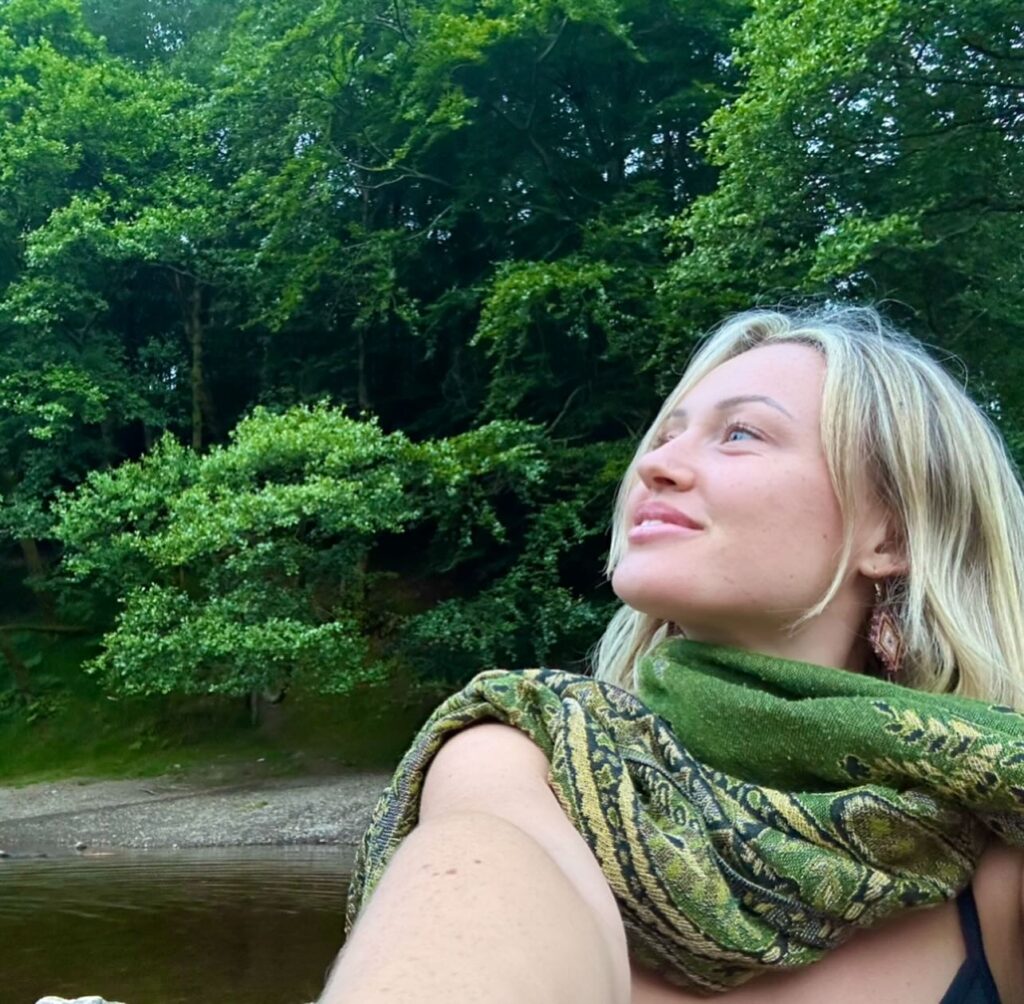Visualization

Visualization
Visualization involves the intentional creation of vivid mental images and scenarios. This powerful technique leverages the mind’s ability to influence our emotions, behaviors, and physiological responses. By visualizing specific outcomes or experiences, we can induce relaxation, boost motivation, and work towards manifesting our goals. Visualization plays a role in holistic wellness by addressing the interconnectedness of mind, body, and spirit.
What is Visualization?
Visualization uses mental imagery as a tool to create an inner experience. It involves engaging the senses to create detailed mental pictures, feelings, and even imagined physical sensations. Within the context of holistic wellness, Visualization helps to align our conscious and subconscious minds, focusing our intentions and increasing our belief in achieving desired outcomes.
How can Visualization help you?
Visualization offers a multitude of potential applications for enhancing well-being:
- Stress Reduction: Visualizing peaceful scenes can elicit a deep relaxation response and reduce stress.
- Goal Achievement: Visualization helps clarify goals, create a mental blueprint for success, and increase motivation.
- Performance Enhancement: Athletes, musicians, and performers frequently use visualization to improve their skills and outcomes.
- Healing: Visualization can be used to imagine oneself in a state of health and support the body’s healing process.
- Personal Growth: Visualization can facilitate self-discovery, foster a positive mindset, and promote self-efficacy.
What is Visualization good for?
Visualization can be specifically beneficial for addressing the following:
- Anxiety and Fear: Visualizing yourself confidently handling challenging situations can reduce anticipatory anxiety.
- Self-Esteem: Visualization helps create a positive self-image and cultivate a sense of self-worth.
- Pain Management: Some find that Visualization techniques can lessen the intensity of pain sensations.
- Changing Habits: Visualization assists in vividly imagining the desired behavior change in action, facilitating its implementation.
- Sports Performance: Visualization promotes confidence, focus, and can help athletes fine-tune their skills mentally.
Benefits of Visualization
Regular Visualization practice can lead to the following benefits:
- Reduced Stress and Anxiety: Visualization activates the parasympathetic nervous system, the body’s relaxation response. This counteracts the fight-or-flight response triggered by stress, lowering heart rate, blood pressure, and cortisol levels. By visualizing calming scenes or activities you find enjoyable, you can signal to your body to enter a state of relaxation, reducing the negative physiological effects of stress.
- Greater Calmness and Focus: Visualization cultivates the ability to concentrate and direct mental energy. When you engage in Visualization, you train your brain to filter out distractions and focus on the present moment. This improved focus can translate into all areas of your life, enhancing your ability to concentrate on tasks, manage distractions, and stay present in conversations.
- Enhanced Motivation: Vivid visualizations of goals can increase drive and perseverance. When you create clear mental images of achieving your goals, you stimulate the reward centers of the brain, releasing dopamine, a neurotransmitter associated with motivation and pleasure. This positive reinforcement loop can fuel your motivation and keep you focused on taking action towards your aspirations.
- Improved Confidence and Self-Belief: Visualization helps to overcome negative self-talk and builds self-efficacy. By repeatedly visualizing yourself successfully performing a task or achieving a goal, you can challenge negative self-beliefs and replace them with empowering thoughts. This boost in confidence can translate into greater willingness to take risks, improved performance, and a stronger sense of self-belief.
- Increased Creativity and Problem Solving: Visualization can inspire new ideas and solutions to challenges. Engaging in Visualization allows you to explore different scenarios and possibilities in a safe, non-judgmental space. By stepping outside of linear thinking and tapping into your imagination, Visualization can spark new ideas and creative solutions to problems.
What to expect from Visualization with a practitioner
Visualization guidance can take various forms:
- Guided Imagery: Practitioners guide you through a step-by-step visualization process using calming, evocative language.
- Hypnotherapy: Some hypnotherapists incorporate Visualization techniques within a state of deep relaxation.
- Visualization for Specific Goals: Practitioners may assist in developing personalized Visualization scripts for specific objectives.
- Individualized Support: Sessions may offer assistance with refining your Visualization skills and creating effective imagery.
Similar Modalities to Visualization
Other modalities share similarities with Visualization’s focus on mental focus and harnessing inner resources:
- Meditation: Many meditation practices include elements of visualization and focus on calming the mind.
- Affirmations: Positive affirmations paired with Visualization can reinforce desired belief shifts.
- Hypnosis: Leverages a state of deep relaxation and suggestion, often incorporating imagery similar to Visualization.
- Neuro-Linguistic Programming (NLP): Uses language patterns and Visualization techniques to reprogram thought patterns.
Final Thoughts
Visualization is a versatile and accessible tool for fostering relaxation, personal growth, and goal achievement. If you’re seeking a natural way to reduce stress, improve your mindset, and tap into your inner potential, Visualization is worth exploring. Remember, consistency is key! With regular practice, you can harness the power of your mind to create positive shifts and elevate your overall well-being.
Scientific References
- Rossman, M. L. (2000). Guided imagery for self-healing. New World Library.
- Kabat-Zinn, J. (2013). Full catastrophe living. Bantam.
- Murphy, S. M., & Jowdy, D. P. (1992). Imagery and mental practice. Handbook of research on sport psychology, 221-250.
Recommended Reading
- Gawain, S. (1997). Creative visualization: Use the power of your imagination to create what you want in your life. New World Library.
- Maltz, M., & Hanauer, B. (1967). Psycho-cybernetics, a new way to get more living out of life. Prentice-Hall.
- Richards, D. (2020). The art of winning: Improve your sports performance with visualization. Pitchford Publishing.
FAQ: Visualization
Can anyone do Visualization?
Yes! Most people are capable of visualizing with practice, although imagery vividness may naturally vary.
How long should I practice Visualization?
Even brief, 5-10 minute Visualization sessions can benefit. Aim for consistent practice for optimal results.
Is Visualization the same as daydreaming?
While similar, Visualization involves deliberate control, direction of images, and a specific focus.
Can Visualization cure my medical condition?
No. Visualization is a complementary technique, and should never substitute conventional medical care.
How do I create effective visualizations?
Engage ALL senses for vividness. Practice regularly to cultivate your mental imagery “muscles”.
Related Practitioners
Kim McIntire
The Neurodivergent Healer & Hypnotist
- Carson City, Nevada, United States
- +1 (775) 240-6381
My name is Kim McIntire, and my transformative journey in holistic wellness commenced 22 years ago during my time at… Read More
Ella Ringrose
Awaken Your Inner Power, Align with Your Purpose
- Toronto, Golden Horseshoe, Ontario, Canada
- +1 (555) 555-0000
Ella Ringrose is a spiritual guide dedicated to empowering individuals on their spiritual journeys. Through her YouTube channel, she shares… Read More
Ali Campbell
Neuro Linguistic Programming Expert
- Los Angeles, Los Angeles County, California, United States
- +44 (2) 555-5555
As information is rapidly changing, we encourage you to continue to stay informed. Please visit our Coronavirus Resource Center, Healthgrades… Read More























